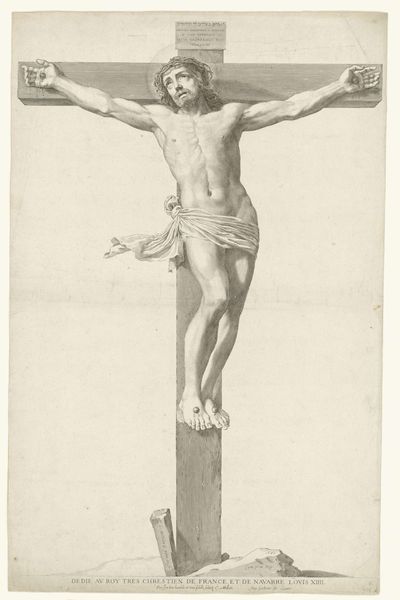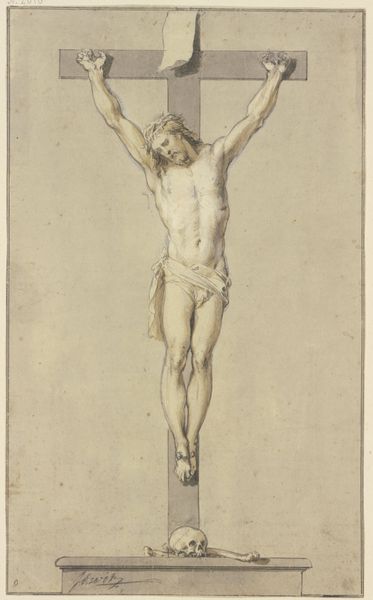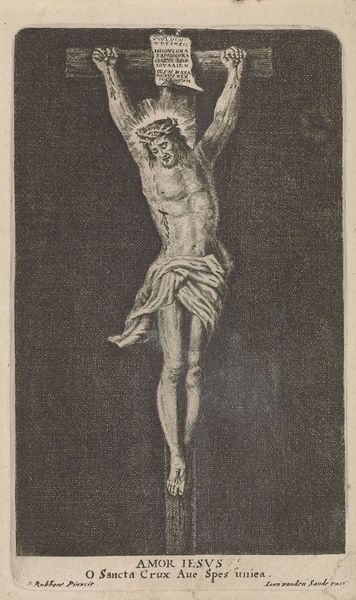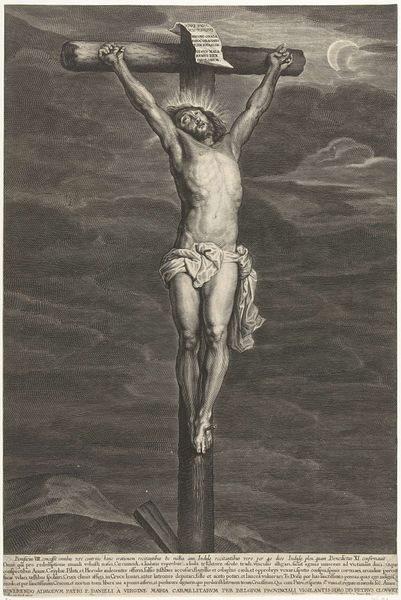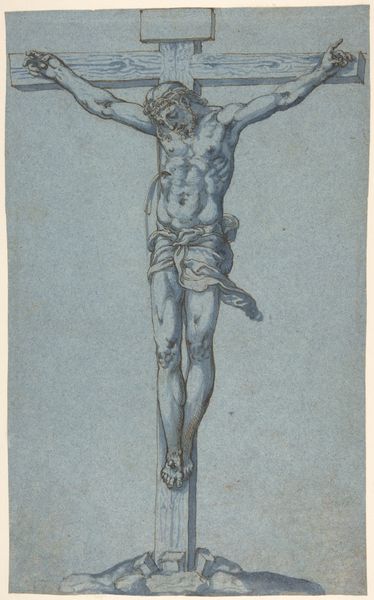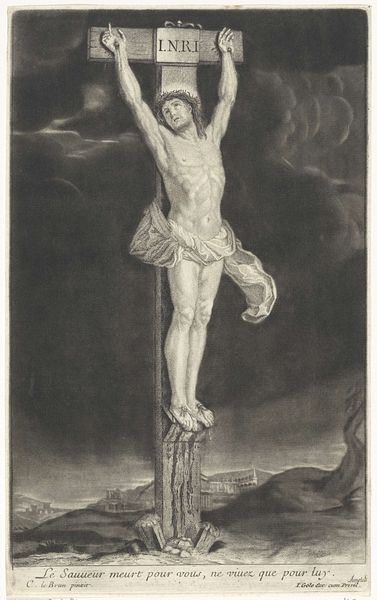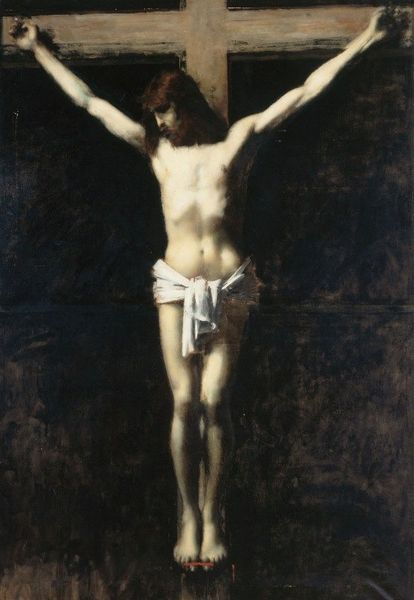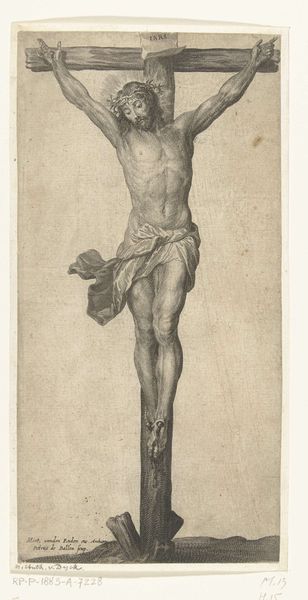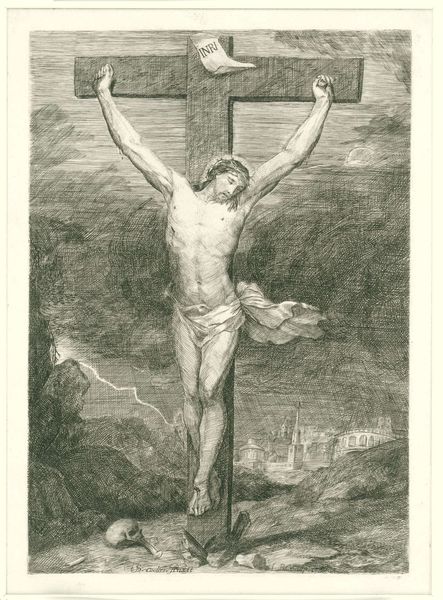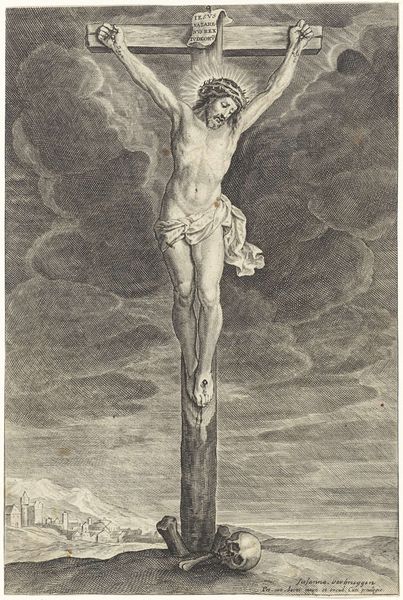
Dimensions: height 415 mm, width 265 mm
Copyright: Rijks Museum: Open Domain
Arnold de Jode created this engraving of Christ on the cross sometime in the mid-17th century. The image is a careful synthesis of religious doctrine and artistic convention. De Jode was working in Antwerp, a city that remained Catholic in a region increasingly defined by Protestantism. His print reinforced the centrality of Christ's suffering to Catholic belief. But this was also a time when the institutions of art themselves were changing. Printmaking allowed artists to reach a wider audience, but it also made them more dependent on the market. De Jode's Christ is both a devotional image and a display of artistic skill. The detailed anatomy and dramatic lighting are meant to impress viewers. The Latin inscription at the bottom translates to: 'He alone suffered for all, which all could not bear together.' To fully understand this work, we might consult theological texts, histories of Antwerp, and records of the print market. This approach will help us appreciate how it spoke to its original audience and how its meaning has changed over time.
Comments
No comments
Be the first to comment and join the conversation on the ultimate creative platform.
